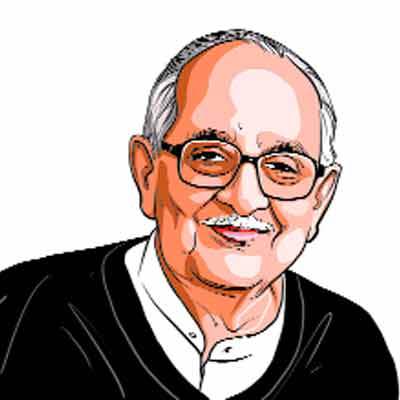Opinion Fali S Nariman writes: Why we need Basic Structure
The basic structure doctrine was unanimously reaffirmed by the SC. Parliament has also accepted it
 All this has not been included in the law reports since there was no decision on the post-mortem initiated after Kesavananda.
All this has not been included in the law reports since there was no decision on the post-mortem initiated after Kesavananda. On the Ideas page, the article titled “Let’s debate the Basic Structure” (IE, August 28), assumes: One, it was only in Kesavananda Bharati (April 1973), that by a narrow majority of 7:6, in a bench decision of 13 judges, the basic structure doctrine was propounded; and two, that since then the basic structure doctrine has not been debated.
But in 1973, the Union of India, then represented by a government with an overwhelming majority in Parliament, had promptly filed an application for a reconsideration of the April decision; and on November 10, 1975 a bench of 13 judges was specially constituted by CJI A N Ray for debating the following question: “Whether the power of amendment of the Constitution was restricted by the theory of basic structure and framework as propounded in the Kesavananda Bharati case (1973)”.
This bench of 13 judges included CJI A N Ray along with four of his erstwhile colleagues who had been on the bench that decided the Kesavananda case, along with eight new judges appointed since April 1973. This new bench of 13 judges then assembled on November 10, 1975, when detailed arguments were heard on two successive days; eventually, as soon as the bench of 13 judges reassembled on the morning of November 12, 1975, Chief Justice Ray peremptorily announced in open court: “This bench is dissolved!”
All this has not been included in the law reports since there was no decision on the post-mortem initiated after Kesavananda. However, India’s constitutional historian, H M Seervai, in his book Constitutional Law of India (Vol 2) 4th edition (1993) at page 1957 has faithfully recorded the sequence of events, adding the pertinent comment: “This sequence of events would suggest that Ray CJ realised, before 10 November 1975, that his brother judges were not likely to depart from the theory of the basic structure; and it would also suggest that the two days’ hearing before the bench of thirteen judges satisfied him that the doctrine of the basic structure would not be reconsidered by the present bench.”
Earlier, in the month of June 1975, an extraordinary event had occurred. A prime minister in office, with a commanding majority in Parliament, had been unseated, in an election petition tried by a judge in the High Court of Allahabad. Prime Minister Indira Gandhi then filed an appeal against the judgment in the Supreme Court. Whilst her appeal was pending, the Constitution Thirty-Ninth Amendment Bill, 1975 — inserting Article 329A — was passed. The fourth clause of Article 329A completely freed the disputed election of PM Gandhi from the restraints of all election laws since it declared that her election was valid and deemed to be valid “notwithstanding the judgement of any Court”.
Fortunately, the Supreme Court of India (presided over by CJI Ray) resisted this crude legislative attempt at validation. Mrs Gandhi’s election appeal in the Supreme Court was ultimately decided unanimously in her favour, on the merits of the election appeal, (on November 7, 1975), but not before the Constitution Bench had first held that Article 329A(4) was unconstitutional and void since it violated the basic structure of the Constitution. (The remaining clauses of Article 329(A) were deleted by the Constitution 44th Amendment Act, 1978). It was this decision that helped to cement the foundation that had been laid in Kesavananda Bharati (1973).
This is not all. In 1980 in yet another decision of a Constitution Bench of five judges in Minerva Mills vs Union of India, and later in 2007, in a final decision in IR Coelho vs State of Tamil Nadu, the basic structure doctrine was unanimously reaffirmed in a bench decision of nine judges of the Supreme Court. Parliament has also accepted the basic structure doctrine — by the Constitution 44th Amendment Act 1978, Parliament declared that Articles 20 and 21 of the Constitution (Protection in respect of conviction for certain offences, and protection of life and personal liberty) could never be suspended, even during the proclamation of an Internal or External Emergency — simply because what is provided for in the said articles is a basic feature of the Constitution.
Long before the doctrine of basic structure had been propounded, constitutional expert from Germany, Dietrich Conrad, in an address to the Banaras Hindu University in Varanasi had pointed out — in 1965 — that on first principles “any amending body organised within a statutory scheme, howsoever unlimited its power, cannot by its very structure, change the fundamental pillars supporting its constitutional authority”.
The writer is a constitutional jurist and senior advocate to the Supreme Court




